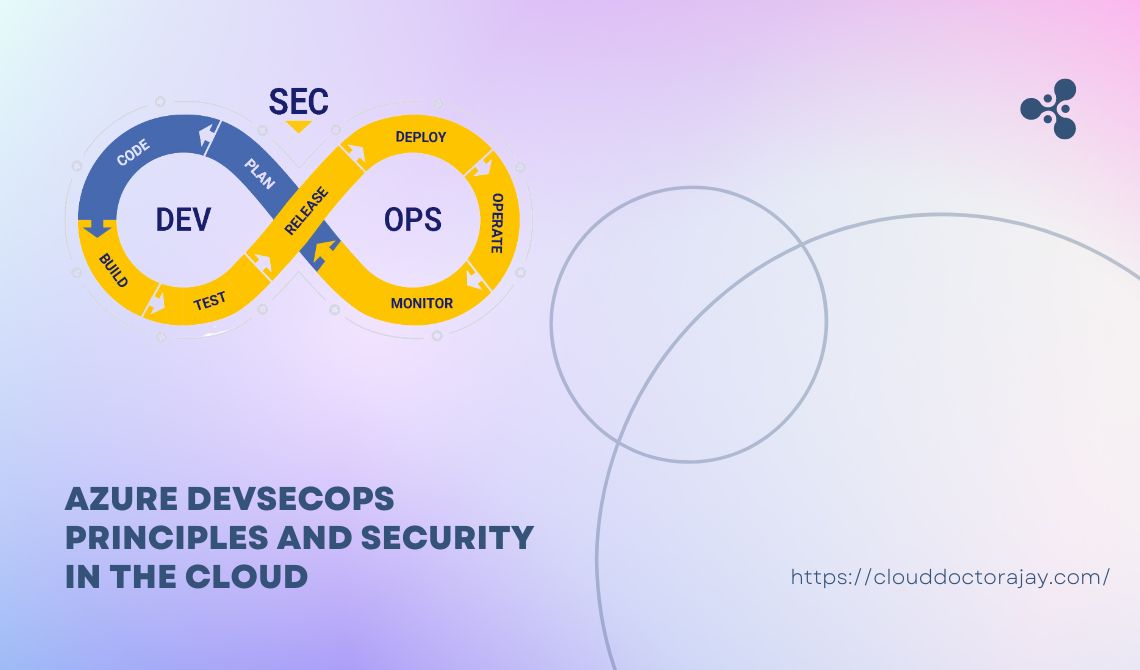Introduction: Azure DevSecOps Principles
Organizations are utilizing the power of the cloud to foster creativity and agility in today’s fast changing digital landscape. But as the pace of digital transformation quickens, so does the demand for effective security measures.
DevSecOps steps in at this point. Development, operations, and security are united in DevSecOps, which seamlessly incorporates security practices into the development process. In order to make sure that your cloud-based applications are not only cutting-edge but also safe, we’ll delve into the world of Azure DevSecOps in this blog.
Investigating Azure Privileged Identity Management (PIM)
Azure DevSecOps Principles
Automation is Important:
DevSecOps has automation at its core. Azure offers a wide range of automation tools, such as templates for Azure Resource Manager.
Shift Left Approach:
Adopt a “shift left” mentality in which security issues are incorporated into development from the very beginning. To find vulnerabilities early and reduce their impact and cost, Azure DevOps provides capabilities including pipeline automation, code scanning, and interaction with security tools.
Infrastructure as Code (IaC):
You can define your infrastructure as code using Azure Resource Manager templates. By incorporating security configurations directly into your deployment scripts, this strategy not only promotes reproducibility but also ensures that your infrastructure is set up safely from the beginning.
Constant Watch and Threat Detection:
Azure Security Center offers constant watch and threat detection for your cloud services. It allows you to learn about security flaws, configuration errors, and potential dangers.
Identity and Access Management (IAM):
A key component of DevSecOps is Azure Active Directory (Azure AD). Utilize the authentication, single sign-on, and role-based access control (RBAC) features of Azure AD to implement sound identity and access management practices. Thus, only authorized individuals will be able to access vital resources.
Secure Coding Procedures:
Azure DevOps incorporates code scanning technologies like Azure Security Center and Azure DevOps Repos. To find and fix vulnerabilities in your code before deployment, use static application security testing (SAST) and dynamic application security testing (DAST).
Container Security:
Azure Kubernetes Service (AKS) provides strong security features for containerized applications. Network policies should be implemented, security configurations should be enforced using Azure Policy, and Azure Container Registry should be used to periodically check container images for vulnerabilities.
Incident Response Planning:
Having an incident response strategy that is well established is just as critical as prevention. You can efficiently contain and mitigate security issues with the aid of Azure Security Centre’s actionable insights and incident response orchestration tools.
Introduction to Azure Security Architect Role & Responsibilities
Training and Education:
Spend money on security best practices training and education for your development and operations personnel. Azure provides a plethora of educational tools, like as practical labs and certifications, to provide your staff with the necessary skills.
Constant Improvement:
The DevSecOps approach is iterative. Continually evaluate and improve your security procedures in light of user feedback and lessons learnt. Because Azure is cloud-native, you can modify and improve your security posture as the threat landscape changes.
In summary, Azure DevSecOps enables businesses to create, deploy, and maintain apps.
Conclusion:
Azure DevSecOps enables businesses to create, manage, and deploy secure cloud-based apps. By incorporating security into each phase of the development process, you not only strengthen your apps against threats but also promote a culture of ongoing innovation and improvement. Adopt the tenets and best practices of Azure DevSecOps to make sure your journey toward digital transformation is robust and adaptable in the face of changing security concerns.





